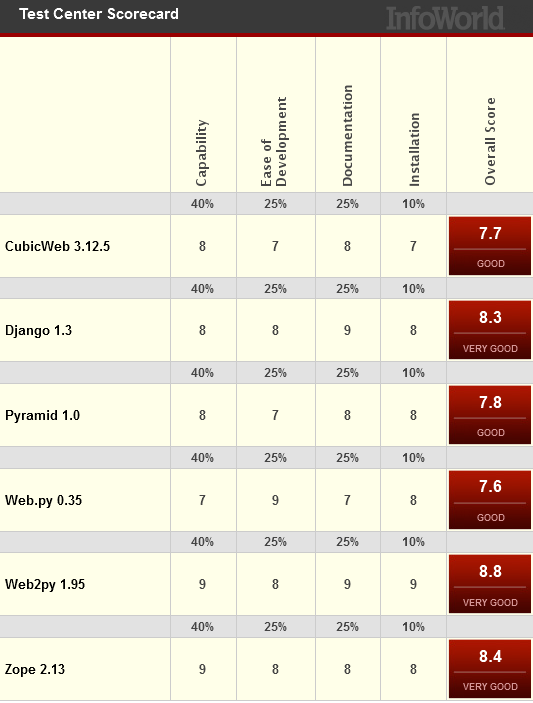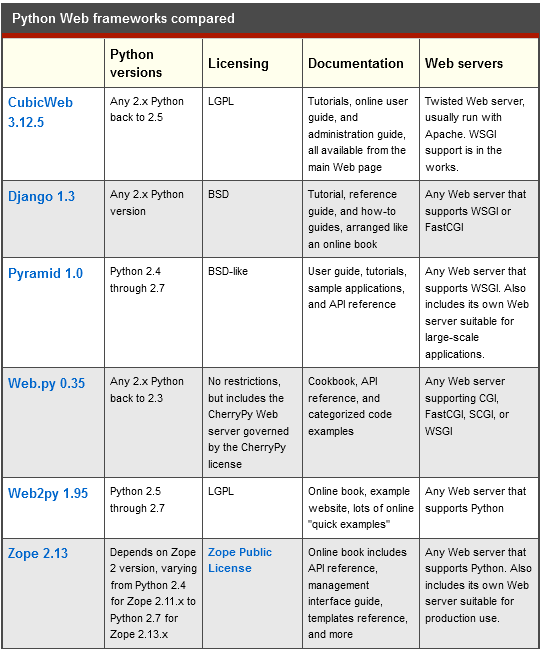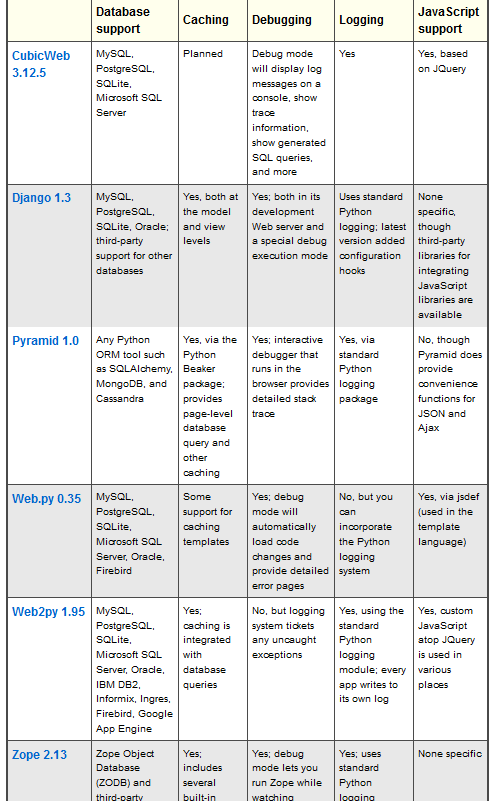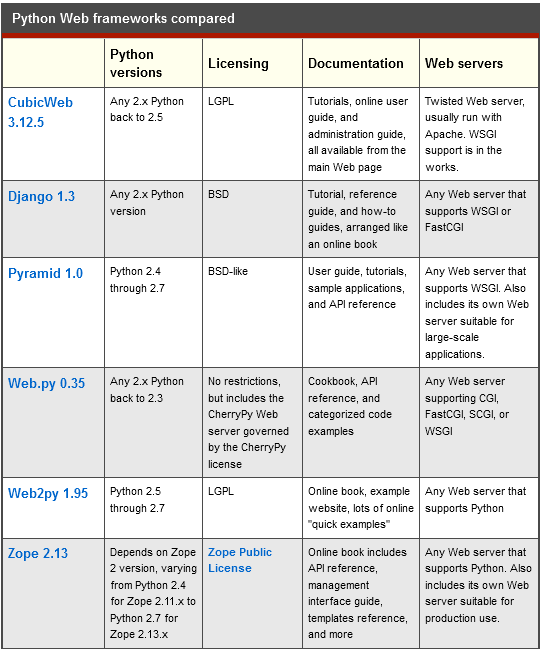Though Python is not as prevailing as, say, PHP as a language for Web apps and tools, but still Python yet has much to acclaim it in that strength. It is a dynamic, deduced language, as is PHP and thus inspires iterative, examining development. Programming perfectionists could point to the fact that object orientation was intended into Python from its very beginnings, somewhat than being retrofitted to the language at a later point in its life.
Language design contemplations aside, the competences exemplified in Python’s standard libraries are remarkable. Python even installs with its own Web server. In accumulation, Python claims adequately of free database libraries, many free Web page template systems, and even libraries for interfacing with your preferred Web server, all set to download and put on to your next Web app project.
In this post, we are going to review six Web application frameworks for the Python Web developer. These are by no means the only Python Web frameworks accessible, but signify a comprehensive specimen of the potentials. No matter what your requirements or preferences as a Python developer might be, one of these six frameworks assurances to be a worthy fitting?
1. Zope 2
Zope 2 is a successor of Zope, the great-granddaddy of all Python Web app tools and an imperative division in the Python family tree. Zope 2’s “object publishing” system fits well into an object-oriented development approach and alleviates rather the learning curve you would have to rise if you chose a framework that disclosure your application to more of the more agonizing features of Web development.
2. Web2py
The Web2py framework is concept bliss. Databases hide after a Database Abstraction Layer (DAL). Web2py’s interpretation system will attempt to discover a view that — dependent on context — shows an object in JSON, HTML, XML, or any of the half-dozen protocols the framework supports. Logically constructed by a professor of computer science, Web2py’s template system really permits you to make use of Python as an HTML-embeddable scripting language.
3. Web.py
The idea of Web.py — a simple framework — is not too intellectual away the particulars of interrelating with the Web, but to make that communication simpler. As a consequence, you will catch yourself writing HTTP GET function handlers nonstop.
4. Pyramid
Pyramid is also uncluttered Web framework, not so much in its competence as its thinking. It makes no declaration about the back-end database you should use, nor does it impose a specific template system on the developer.
5. Django
Django is an advanced and extremely considered Web framework that accepts you discern Python well. Its libraries offer a decent collection of the must-have competences for quickening Web app development.
6. CubicWeb
CubicWeb hypes itself as not just a Web development framework, but a semantic Web development framework. This difference converts clear when you learn that a CubicWeb application’s communication with a database is achieved using RQL (Relation Query Language), a query language alike to the W3C’s SPARQL for RDF.





There are no doubt many Web Frameworks Blogs, also I have been following this Blogs from designdrizzle.com & it is really very nice to learn more about Web Frameworks here.
Also check out:- thehtmlcoder.com